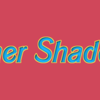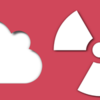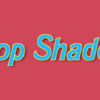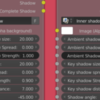Drop Shadow And Inner Shadow.
Usage:
Those node groups can be used in any kind of graphic design, that includes, Motion graphic, Logos designs, Inforgraphs, Texts, etc.
Outputs:
Shadow: Returns a greyscale image that represent the visible shadow, which means shadows that are under the object and can't be seen are not included.
Complete Shadow: Returns a greyscale image that represent the whole shadow.
Inputs:
Image: The object to cast its shadow, the only data that matters is the alpha channel, the alpha channel should be non transparent for all the pixels that represent the object, if you don't have an alpha and you have a BW image where the white pixels represent the object, all you have to do is add a "Converter>Set alpha" and plug the image for the alpha and the image inputs.
Ambient Shadow Size: This controls the size of the Ambient occlusion.
Ambient Shadow Spread: This controls the sharpness of the Ambient occlusion.
Ambient Shadow Strength: This controls the opacity of the Ambient occlusion. Key Shadow Size: It is the size of the shadow resulted from the a key light or a directional light.
Key Shadow Spread: It is the sharpness of the shadow resulted from the a key light or a directional light.
Key Shadow Strength: It is the opacity of the shadow resulted from the a key light or a directional light.
Key Shadow Distance: It is the distance between the object and its shadow.
Key Shadow Angle: It is the orientation of the directional light that makes the key shadow.
Noise: It is a noise applied to the shadow to achieve a specific style.
Inner shadow work just the same but it simulate a hole in the original plane so it become inner shadow.
Discover more products like this
Compositing Drop shadow Inner shadow dev-fund Graphic design node group inforgraph Shadow spring24 bfcm19









